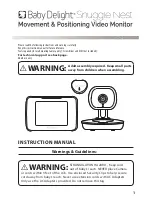
28
Beurer BGL60 mg/dL
5.4 Evaluating a blood pressure measured value
Your measuring device can process measured values between 50-270 mmHg
(systolic), 20-200 mmHg (diastolic) and 40-199 beats/min.
Blood pressure,
WHO classification:
The World Health Organization (WHO) and the National High Blood Pressure
Education Program Coordinating Committee have developed standard blood
pressure values for detecting blood pressure levels with high and low risk. How-
ever, these standard values serve only as general guidelines, since the individual
blood pressure of different people and different age groups etc. deviates.
It is important that you consult your physician at regular intervals. Your physician
will provide you with your individual values for normal blood pressure and the
value above which the blood pressure level should be regarded as dangerous.
Classification of blood pressure levels for adults (measuring unit: mmHg)
Range of the blood pressure
levels
Systolic
pressure
Diastolic
pressure
Remedy
Level 3:
severe hypertension
≥
180
≥
110
Visit a physician
Level 2:
moderate hypertension 160-179 100-109
Visit a physician
Level 1:
mild hypertension
140-159 90-99
Regular check-up by your
physician
High normal
130-139 85-89
Regular check-up by your
physician
Normal
120-129 80-84
Self-check
Optimal
< 120
< 80
Self-check
Source: WHO, 1999
The WHO classification in the display shows the range in which the measured
blood pressure belongs. If the systolic and diastolic values are in two different
WHO ranges (e.g. systolic pressure in the hypertension range level I and diastolic
pressure in the normal range), then the WHO classification on the unit always
shows you the higher range, in the example given, "Hypertension level I".
















































